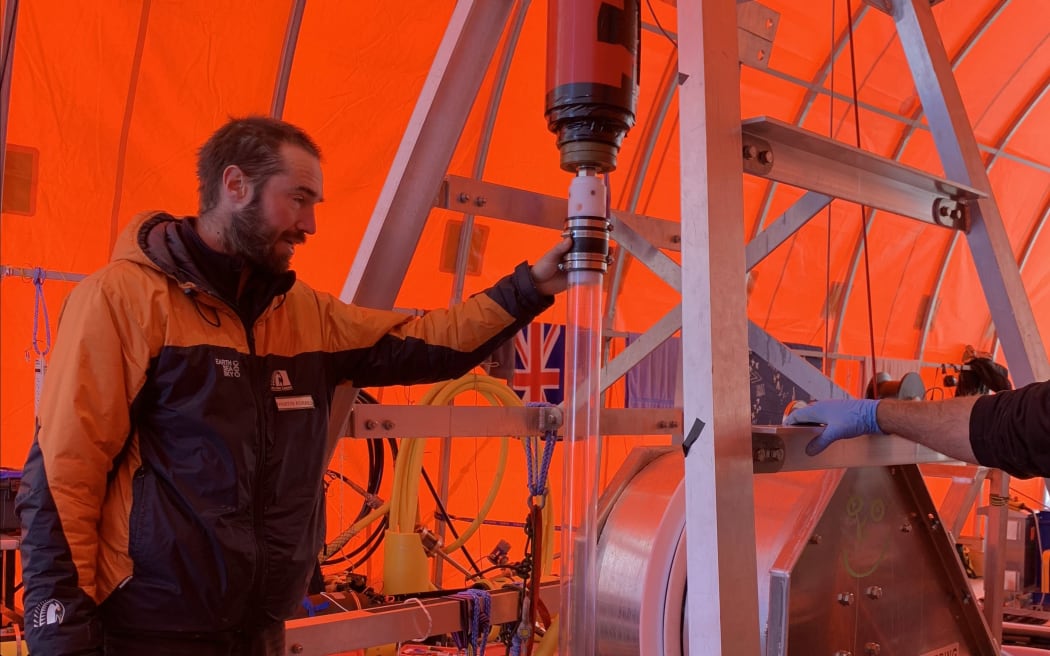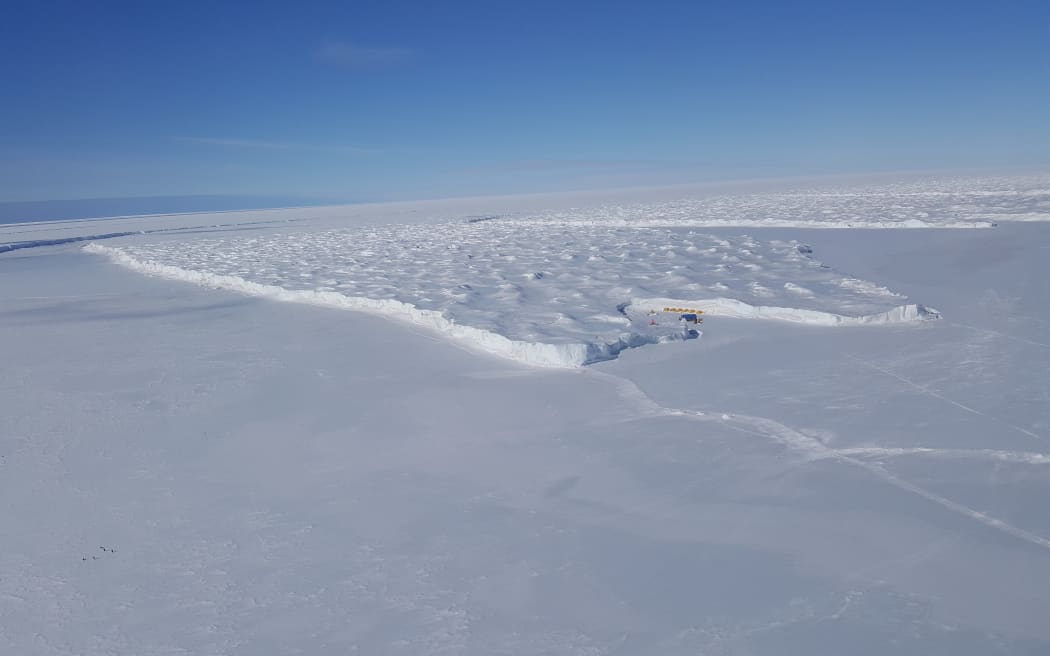How do you reach the ocean under a sheet of floating ice 600m thick? Use a hot water drill to melt through it.

Martin Forbes, from the University of Otago, dropping a gravity corer through a hole made by using hot water to drill through 600 metres of ice. Photo: Do Gong
That’s what a team of researchers are up to in this episode of the award-winning 2020 series Voices from Antarctica, which we’re replaying this week.
Click here to listen to the full episode
The team is studying the dynamics of a ginormous river of ice called the Kamb ice stream, which drains from West Antarctica and feeds the Ross Ice Shelf. The river has been stalled for the last 170 years, and the scientists are trying to figure out why.
Plus, what will happen to all this ice in a warming world?

The Ross Ice Shelf meets the smooth annual sea ice at Cape Crozier on Ross Island. The cliffs mark the seaward edge of the largest ice shelf in the world, about the size of France. It is terrestrial ice which has flowed off the Antarctic continent and floats on the sea. The sea ice is frozen seawater. Photo: RNZ / Alison Ballance
Listen to the full episode to learn more about what the ice is telling us – about Antarctica’s future, and ours.
Thank you to Liz Garton for help with this episode.
Learn more:
-
Tune into the full episode on Thursday 27 October at Our Changing World’s new time of 7pm, on Nights with Karyn Hay.
-
Read Alison’s story from the original episode that first aired in 2020.

